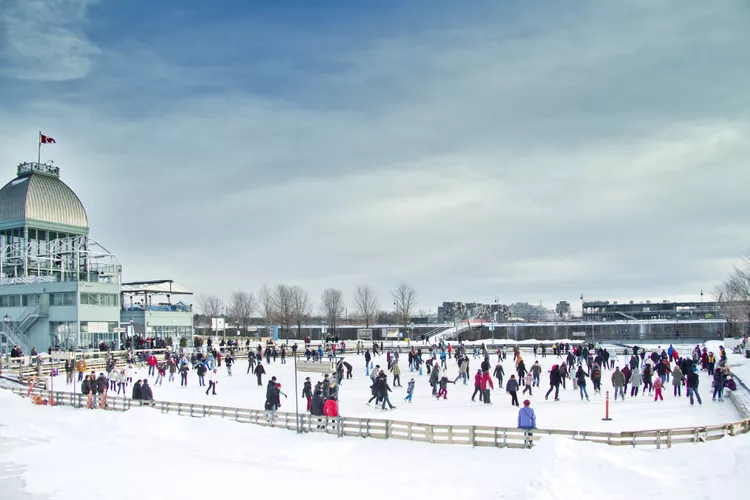Summary
Getting There
Old Montreal is conveniently located between the St. Lawrence River and downtown Montreal. It spans about one square km (or 0.4 square miles), bordered by Rue Saint-Antoine, the St. Lawrence River, Rue Berri, and Rue McGill. To truly experience this charming area, walking is highly recommended.
Getting to Old Montreal
- Three metro stations on the “orange” line service Old Montreal: Square-Victoria, Place-d’Armes, and Champ-de-Mars.
- Driving into Old Montreal can be challenging due to narrow cobblestone streets and limited parking availability.
History of Old Montreal
The rich history of Montreal dates back to 1642 when French settlers arrived at the edge of the St. Lawrence River to establish a Catholic community. The area evolved into a major trading and military hub, famously encircled by fortifying walls, and served as the location of Canada’s parliament for several years in the 19th century.
What to Do in Old Montreal
Visitors can fully appreciate Old Montreal by wandering its picturesque streets and discovering its hidden gems. It’s advisable to also visit well-known attractions and start at the tourist bureau located at 174 Notre-Dame St. East to pick up a complimentary map.
For a detailed exploration, Old Montreal offers a self-guided walking tour that includes informative photos and maps.
Old Montreal Museums and Historical Highlights
- Point-a-Calliere Museum showcases the archaeological history of Montreal.
- Notre Dame Basilica, established in 1829, features a spectacular light and sound show detailing the historical significance of Old Montreal and the church itself.
- Centre d’histoire de Montréal, set in a historic fire hall, provides insights into the city’s past.
- Château Ramezay Museum presents Quebec’s and Montreal’s history through various artifacts in a former governor’s residence, complemented by lovely gardens and a café.
Old Montreal Public Spaces
- Place Jacques-Cartier serves as a bustling public square where locals and visitors gather, enjoy outdoor seating, and explore art displays from local craftspeople.
- Montreal’s Old Port runs along the St. Lawrence River, offering pleasant waterfront strolls and green areas for relaxation. In winter, a large outdoor skating rink is available for the public during the Montreal High Lights Festival.
Shopping in Old Montreal
Old Montreal is abundant with galleries, boutiques, and shops featuring art, jewelry, houseware, and gourmet items. While some tourist shops sell trinkets, these are often located in beautifully preserved historic buildings. In summer, vendors and artists display their creations in public squares, offering visitors a chance to find unique pieces.
Places to Eat in Old Montreal
The culinary scene in Old Montreal is diverse, with many restaurants and cafés worth exploring. However, visitors should be cautious of tourist traps. Notable dining options include:
- Le Jardin Nelson: Renowned for its crepes and beautiful outdoor terrace set in a 19th-century building.
- Olive + gourmando: A cozy spot known for its homemade pastries, soups, and sandwiches.
- Les 3 Brasseurs: A lively place serving microbrew beers and bar food.
- Club Chasse et Pêche: An upscale dining establishment with a rich ambiance and creative menu.
- Chez l’Épicier: A well-respected restaurant offering gourmet dishes and a lovely food shop.
- Canadian Maple Delights: A bistro famous for its maple-themed pastries and ice cream.
Hotels in Old Montreal
Old Montreal features primarily boutique hotels rather than large chains, offering travelers a unique lodging experience. While staying in the area can be pricier, visitors may find more affordable options in nearby downtown Montreal. Some popular hotels include:
- Auberge du Vieux-Port: A charming riverfront hotel situated in a heritage building.
- Hotel Place d’Armes: Known for its modern, stylish accommodations and an award-winning restaurant.
- Hotel St. Paul: A luxurious boutique hotel famed for its exquisite dining options.
When to Visit Old Montreal
Montreal’s winters are long and frigid, leading to a quieter Old Montreal from late December until the May long weekend, when some businesses may close. This period can present great travel bargains. Warmer months, particularly July with its multitude of festivals, attract the most visitors and can be more expensive, thus planning ahead is recommended.





